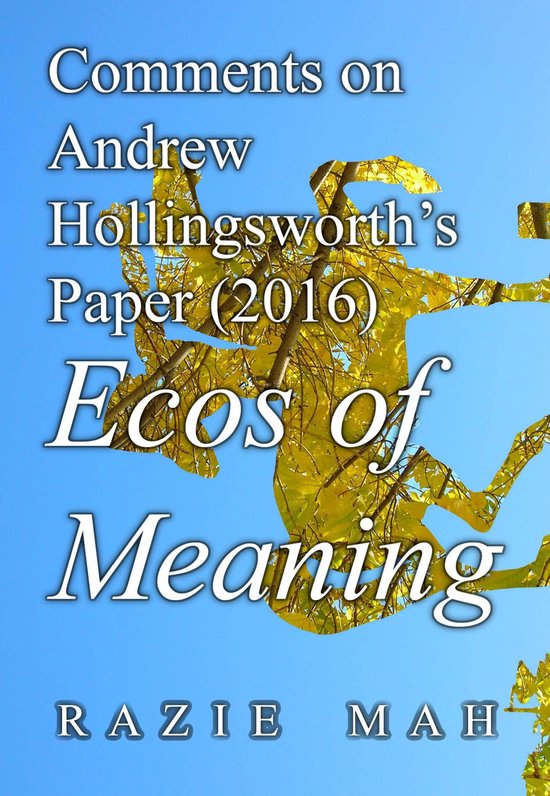In Ecos of Meaning: Umberto Eco’s Semiotic Theory for Theological Hermeneutics (2016), theologian Andrew Hollingsworth seeks a clearer definition of “meaning”.
He hopes that Eco’s exposition, A Theory of Semiotics, does the trick.
Key terms include: sign, text, authorial intent and reader significance.
These terms may be associated to category-based nested forms, producing an image of Eco’s cultural unit. Code fits into the diagram, illuminating the different natures of denotation and connotation.
Sign production is not so simple, since there are two actualities, sign and text.
For the former, Eco’s cultural unit combines the content and situation levels. It contains a situation-level sign-object. It assumes an unchallenged perspective level.
The triadic sign within Eco’s cultural unit operates according to formal extrinsic specificative causality.
For the latter, the author projects a sign-object into the perspective level, generating a triadic sign that operates according to formal extrinsic exemplar causality. This type of sign combines situation and perspective levels.
Hollingsworth uses Paul’s letter to the Galatians 4:21-31 as an example of hermeneutics in scripture. Close readings of this text exemplify current hermeneutics. This passage is examined using the above category-based models. As author, Paul changes the perspective level during his argument.
In sum, Hollingsworth searches for a way to appreciate the word “meaning”. His use of Eco is a beginning. The category-based nested form re-articulates Eco’s semiotic terms. Reader meaning explicitly appears as a situation-level potential. Hermeneutics is inquiry into this potential.
